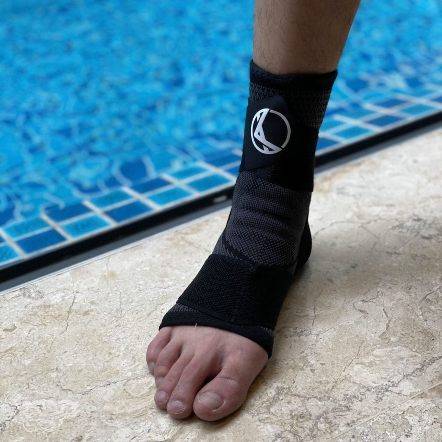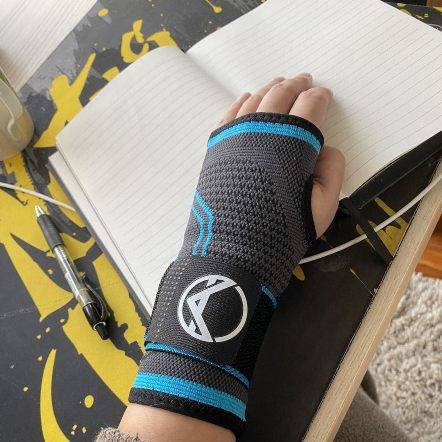
7 Differences of Knee Sleeve vs Knee Brace: Which One Is Best For You?
JUL 31,2023 | 3 Mins Read
TABLE OF CONTENTS
Knee-related issues are among the most prevalent injuries we encounter, which explains why a significant number of people seek supportive gear to alleviate their discomfort. Even though knee sleeves and braces bear some similarities, they also exhibit specific distinctions that could impact your ability to manage pain and recover from an injury.
In the world of orthopedics and sports medicine, knee braces and knee sleeves have carved out unique niches, each with a distinct set of benefits, functionality, and medically backed uses. At the heart of knee sleeves is the widely accepted concept of compression therapy. The design of these sleeves applies steady pressure to the knee area, promoting better blood flow and helping manage inflammation and pain – a principle that has been backed by numerous medical studies.
On the other hand, knee braces are often seen as a more specialized, targeted form of knee support. Their robust construction provides more significant support and stability to the knee joint, especially valuable in the treatment of severe injuries or chronic conditions. Often, these braces are used in conjunction with physical therapy, becoming an integral part of comprehensive treatment plans.
Now, we've written a comprehensive overview of the two different knee supports available – so let's take a look at some subtle yet significant distinctions between them.

A knee sleeve is a type of compression garment designed to provide compression and support to the knee joint. It is typically made of elastic or neoprene material that fits snugly around the knee. The primary benefits of a knee sleeveis to provide compression and warmth to the knee.

A knee brace is a type of support device that is worn around the knee to provide stability, protection, and pain relief. It is commonly used by individuals who experience knee pain or have a history of knee injuries. Knee braces are available in various sizes, colors, and designs to accommodate different needs.
Knee braces are typically constructed using a combination of materials such as metal, foam, plastic, and elastic. They consist of straps or fasteners that secure the brace in place and allow for adjustment to achieve a proper fit.
The primary purpose of a knee brace is to provide external support to the knee joint. It helps to stabilize the knee by limiting excessive movement and preventing certain motions that may aggravate an existing injury or condition. Knee braces can also help redistribute forces acting on the knee, which can alleviate pain and reduce the risk of further damage.
There are different types of knee braces available, each designed to address specific conditions or injuries. Some common types include:
References
Author

Claire Evans worked as the content marketing manager at Koprez. Claire combined a background of writing and editing, marketing, and patient education to best serve consumers, fitness enthusiasts, athletes, and anyone who relies on the Koprez brand for helpful information.
Koprez® Featured Products


"I sprain my wrist super often, so I decided to try out this sleeve. This is game-changing! I've been using it for a while now, and my wrists feel amazing. I haven't gotten in any injuries since using it too. It just makes my wrists feel so supported."
Alexis A.


"Use this for my boxing training. It is a very comfortable brace and does not move out of position during skipping ropes and sparring sessions. I use it while running too. Probably the best brace I've purchased throughout the years. It is very flexible. Makes me look like a pro! :)"
Samuel L.


"I've just got back to running after a couple of years of being plagued by injury. These compressions socks are helping give me peace of mind while I build up my distance again. They are the perfect level of compression, super comfy, and very high quality. Feel great while on a run, and looks great in the orange colour I have!"
Dave R.


"I have a weak ankle, and the Koprez ankle sleeve has been a lifesaver. Wear it every day. Super breathable and comfortable. Like wearing a cool sporty looking sock!"
James F.


"This is the best knee sleeve I've ever tried. It's now a must-have for all my exercises. A few years ago, I had an accident that damaged my knees, but with Koprez I can be active again with no knee pains at all. It's been truly amazing!"
Alex M.


"One of the best purchases I've ever made. It fits your legs all the way from top to bottom, great snug fit, gives you support and definitely helps during rehab and training."
Rafael A.


"I had a minor elbow injury, and Koprez sleeve was super supportive and definitely helped me recover faster. I still use the sleeve to prevent further injury. So far, so good. Very comfortable and does not feel hot at all. Highly recommend!"
Corey B.


"It's really been a game-changer for me. It allows me to exercise a lot longer than I used to. Now my knees don't hurt, and they're not uncomfortable at all."
Mike P.


"Great product!!"
Harold


"I have carpal tunnel, and this brace has helped me work pain-free. Love the materials, and I can feel my wrists slowly getting better, even when I don't wear them!"
Christopher J.


"I wanted to try out these sleeves to improve my squats and deadlift in the gym without worrying about injuring my knees. They stayed up throughout the entire gym session, and my knees feel super supported. Now I can do what I love for years to come. "
Corbin C.